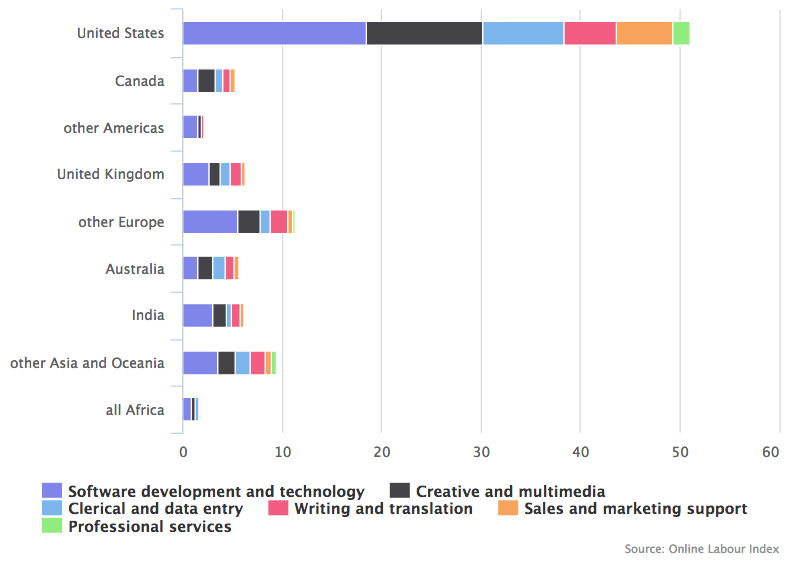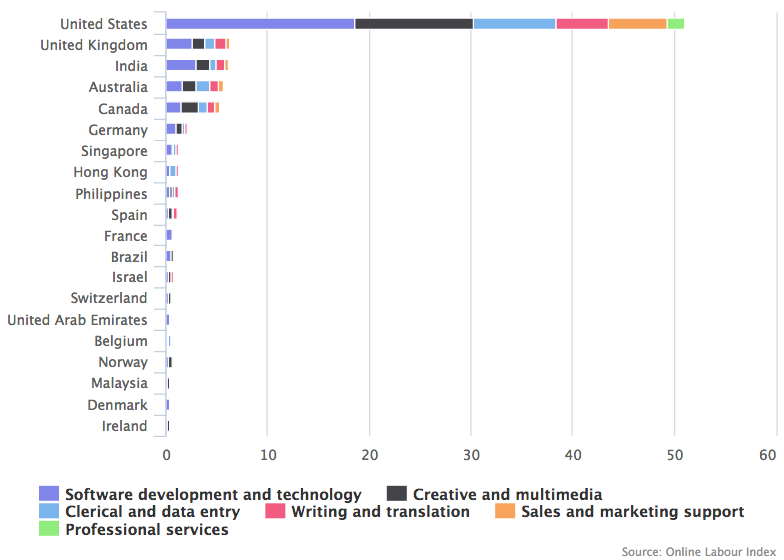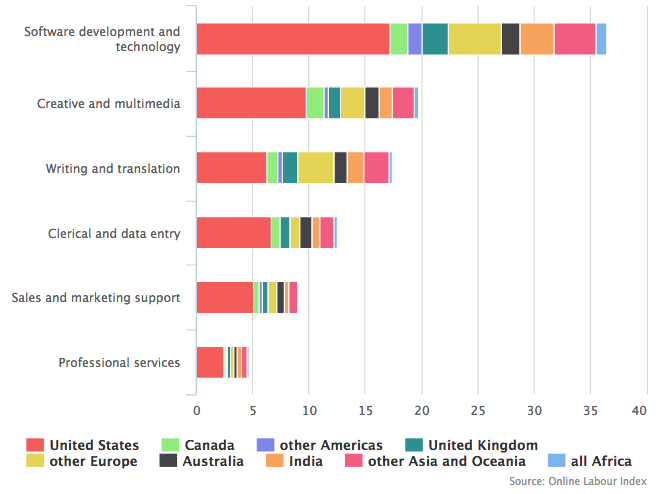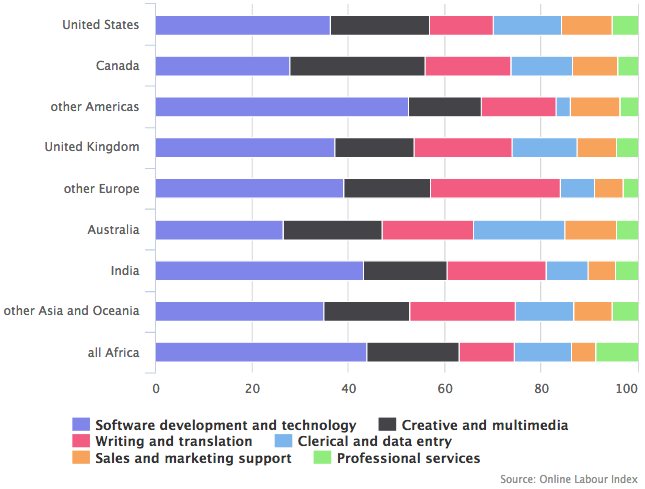The Online Labour Index (OLI) is a new economic indicator that provides an online labour market equivalent of conventional labour market statistics. It is available online as an interactive visualization and automatically updating data set. In this post, we will use the index to examine some basic questions about the online gig economy: In which countries are employers buying labour over the Internet the most? Which skills or occupations are most in demand? These are important questions for policy makers and researchers, as well as to ordinary workers and employers thinking about the future of work in their area.
Which countries are buying online labour the most?

Online Laboux Index, employer country market share (top 5 countries, rest aggregated by region), 19 September 2016
The Online Labour Index shows that US-based employers dominate the market, currently representing approximately 52% of all projects/tasks posted. This is somewhat to be expected, given that most of the platform companies are based in the United States. As the platforms mature and expand their marketing efforts beyond the US, the index will reveal whether employers in other countries start to catch up.
After the United States, there is a group of countries with a smaller market share, consisting of the United Kingdom (6.3%), India (5.9%), Australia (5.7%) and Canada (5%). The largest European country besides the UK is Germany. Non-UK European employers together account for approximately 10% of the market, so that Europe’s total market share is about 16%.

Online Laboux Index, employer country market share (top 20 countries), 19 September 2016
A methodological caveat is that the OLI is currently only tracking English-language platforms. The English-language market is currently the largest, probably by a large margin, and English-language platforms are popular among employers and workers in non-English-speaking countries. However, in future updates we plan to add to OLI the capability to track platforms in other languages as well. We also plan to add the ability to examine the index by worker’s country.
Which occupations are in demand in the online labour market?

Online Labour Index market share by occupation, 19 September 2016
In building the OLI, we found that the types of skills required in online gig work could be classified into six occupational categories, shown in the figure above. The index reveals that software development and technology is the biggest occupational category, with over one third of the projects belonging to it. It is followed by creative and multimedia work, followed by clerical and data entry work. Any future dips in conventional employment statistics in these occupations should be checked against the OLI to see if they are being offset by corresponding increases in online work, suggesting that employers are moving their vacancies online.
Professional services such as accounting and law are the smallest occupational category. Still, the fact that legal services are now regularly bought via online platforms at all is quite remarkable, given that the established professions have not always been at the forefront of technology adoption. Since the OLI is constantly updated, over time it will reveal whether the use of online labour platforms for procuring professional services is growing, and by how much.

Online Laboux Index, share of occupations by employer country, 19 September 2016
We can also examine how popular the different occupations are among employers from different countries. Overall, the differences in the demand profiles of the different countries are fairly small. This is somewhat surprising, given how different the occupational structures are in the conventional labour markets of these countries. A possible explanation is that it is mostly the information technology industry, broadly understood, that is buying online labour in each of these countries. If and when online labour utilization spreads to other industries and sectors, the OLI should show the country demand profiles diverging in ways that more strongly reflect each country’s economic structure.
Tracking shifts in digital and conventional labour markets
To summarize, what we learnt from this brief exploration of the OLI is that US-based employers account for over a half of the market, while European employers together make up about 16%. A range of different skills are being contracted online, including software development and technology, but also professional services such as law. In the coming months and years, the OLI will allow us to examine how the market shares of the different countries and occupations develop over time, and contrast these with changes in conventional national labour markets.
All the figures in this post were produced with OLI’s interactive visualization tool, which allows the data to be explored in many other ways as well.